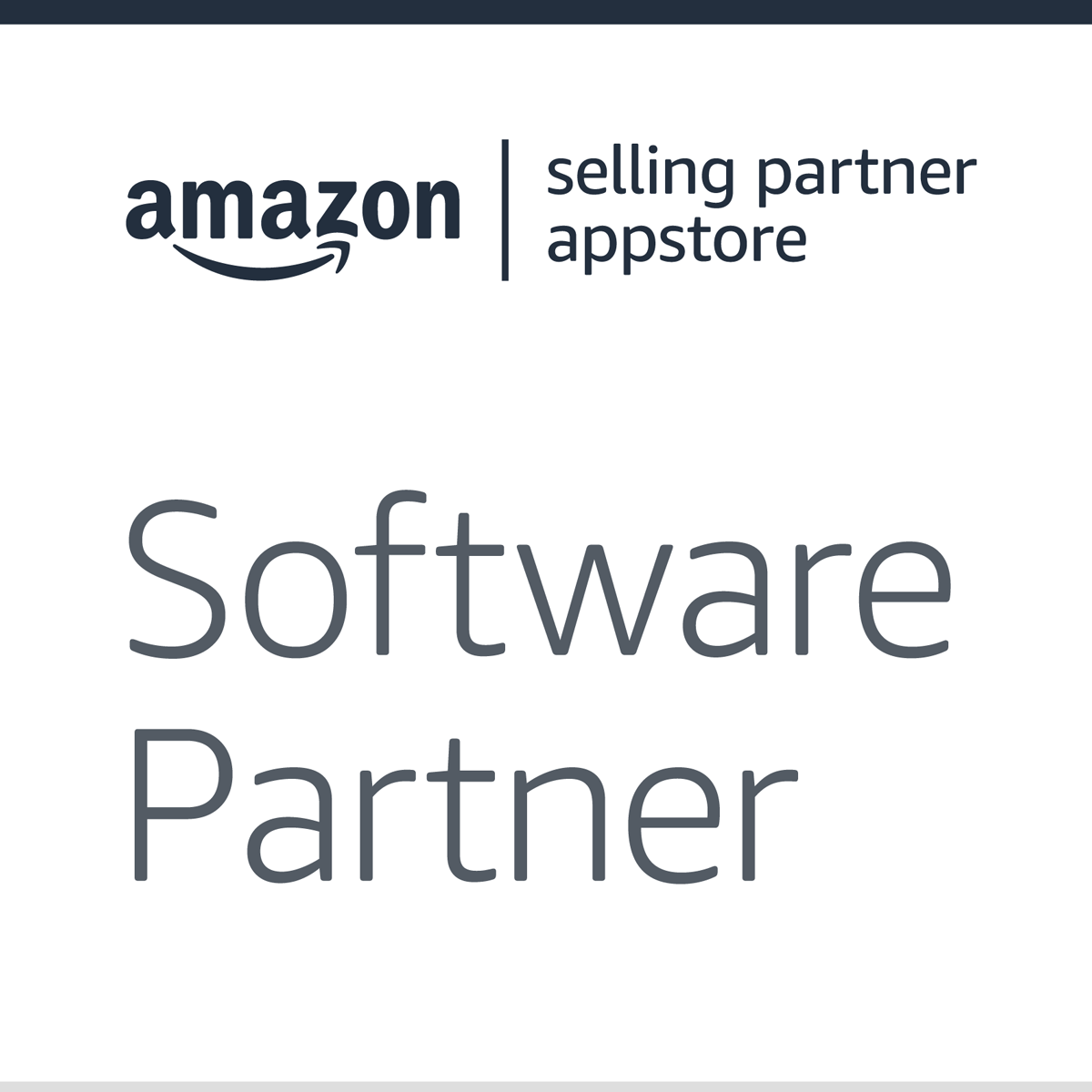Originally published on November 6, 2018, updated March 22, 2023
Menu
Join Our Email List
- Receive our monthly newsletter.
- Stay up to date on Amazon policies.
- Get tips to grow your business.
The best way to think about a vendor relationship with Amazon is to look at it like a wholesale or manufacturer relationship that you have with a retailer. It is a relationship where you are not selling directly to consumers.
Instead, you are selling to a retailer that has its own set of requirements when ordering stock, receiving shipments, managing payments, and merchandising products. This means offering your products to Amazon at wholesale prices, as well as offering additional discounts in the form of co-op agreements and allowances.
In this article, we'll discuss what you should know about Amazon vendor negotiations. We'll also explain the four major types of allowances and things to consider when getting started.
Offering additional discounts on wholesale prices is nothing new with large retailers. It is the type and level of discount Amazon asks for that becomes challenging for vendors. They are pushed to give Amazon their best prices without any guarantee Amazon will drive their business.
 In the brick-and-mortar realm, businesses typically work off rebates and build a rebate structure to incentivize retailers to purchase more stock and take advantage of a more significant discount. In most cases, Amazon avoids these rebate structures and requires a straight discount regardless of the amount it orders – and often a lot higher than what other retailers ask for.
In the brick-and-mortar realm, businesses typically work off rebates and build a rebate structure to incentivize retailers to purchase more stock and take advantage of a more significant discount. In most cases, Amazon avoids these rebate structures and requires a straight discount regardless of the amount it orders – and often a lot higher than what other retailers ask for.
Despite asking for large allowances, Amazon’s margins can be tight on the retail side. Matching the competition, funding programs such as Prime, and offering an outstanding returns policy are three practices that eat heavily into Amazon’s margin. One reason why Amazon asks for such high discounts is its expectation that vendors will help fund such programs.
Amazon has a number of co-op and allowance agreements that you need to agree to in order to become a vendor. These include damage allowance, freight allowance, and base accrual. In addition, there are payment terms that need to be agreed upon. Brands need to be 100% clear on what they are signing up for and do the math before making any official agreements with Amazon.
Brands typically get excited that they have an opportunity to become a vendor and sign agreements, later realizing that they did not fully understand what they agreed to. In this situation, being a vendor ends up costing them more than they had thought. The vendor relationship then becomes unprofitable and it is no longer economically viable for them to continue via this platform. Brands should not be afraid to negotiate with Amazon to find a middle ground. Collaboration is key, as a long-term relationship needs to work for both parties.
When negotiating a contract for the first time, Amazon will typically ask for allowances. These are negotiable to some extent, and the level at which you can negotiate will depend on your size and the influence you have as a brand. Even if you negotiate, you must be prepared to agree to some level of allowance, because Amazon will not completely waive them. Here are the four main categories:
Base accrual is also known as marketing co-op, marketing development funds (MDF), or discretionary co-op. Amazon has stated in the past that this allowance helps cover activities that drive impressions and sales to products such as in-store promotions, PR pitches, merchandising activities, emails, paid search and sponsored links to products, associate referrals, basic site placement, and improvements to the catalog.
In short, this allowance helps fund Amazon’s marketing initiatives and programs. It is typically around 10%, although I have seen vendors agree to more and even less. This is the allowance most vendors struggle to understand as it is not results-based.
A vendor must also be clear about whether they have agreed to prepaid shipments (vendor pays shipping) or collect shipments (Amazon pays shipping) to know whether they use their own carrier or request a carrier from Amazon. If these requirements are not adhered to, expect chargebacks, missing products, and delays in receiving the goods. The warehouse or third-party provider must familiarize themselves with these requirements and ensure they have the correct processes in place. Freight allowance is more common in the US than in Europe.
Where Amazon pays for the shipping, the vendor funds this cost in the form of an allowance. The amount depends on the average cost of shipping for those products. The heavier and larger the items, the greater the freight allowance.
 Note that Amazon has very strict requirements when it comes to preparing and sending shipments. These requirements are in place to make the process of receiving the goods as quick and efficient as possible. It is not just to cause vendors a headache, although it may seem like that at times. Cartons need to be correctly labeled, advanced shipment notifications must be sent and all information provided must be 100% correct.
Note that Amazon has very strict requirements when it comes to preparing and sending shipments. These requirements are in place to make the process of receiving the goods as quick and efficient as possible. It is not just to cause vendors a headache, although it may seem like that at times. Cartons need to be correctly labeled, advanced shipment notifications must be sent and all information provided must be 100% correct.
Amazon prefers to handle damages and dispose of them rather than send them back to the vendor. To cover the cost of handling the returns and disposal, Amazon charges vendors a damage allowance. This amount is typically similar to the average returns rate the vendor will have in the industry, although may be slightly higher factoring in Amazon’s favorable returns policy, where items don’t always come back in sellable condition.
Vendors can also choose not to agree to a damage allowance and instead fund the cost of returning the item back to their warehouse. This is more common among vendors with high-value items, especially electronics.
Amazon will always push for the longest payment terms and the vendor will want the shortest payment terms. Payment terms typically range from 30-90 days, with the average being around 60 days. To incentivize Amazon to agree to shorter payment terms, the vendor can offer an early payment discount. This discount is usually anything from 1-3%.
Amazon may ask for some additional allowances to support initiatives such as AVS (Amazon Vendor Support) aka SVS (Strategic Vendor Support), Subscribe and Save, or get vendors to commit to a certain advertising budget. However, the four main agreements mentioned above (base, freight, damage, payment) are the ones you will undoubtedly need to address.
While nothing is impossible, your chances are limited when it comes to renegotiating contracts in your favor. Unless you are a key vendor, in which case Amazon will do everything it can to keep you happy to avoid jeopardizing their relationship. Based on this, it is important you negotiate the best contracts from day one.
Each year, Amazon will come knocking and ask for improvements to the current agreed-upon allowances. It will compare your account with similar accounts to see if improvements can be made and will also review your overall profitability as an account.
While you can negotiate these requests to increase the allowances, again depending on your size, you will find that you have to compromise slightly. Be prepared to have something in your back pocket so you are not bled dry. You don't want to end up with an account that is no longer profitable.
Amazon will typically place orders once a week or fortnightly depending on demand. You have no control over the quantities Amazon is ordering and cannot ship more or less than what has been ordered. You need to ship exactly what is confirmed on the purchase order (PO) within the specified ship or delivery window, often 24-48 hours from receipt of the order. No earlier, no later.
If the exact amount is not shipped within the specified time frame be prepared to be stung with a series of fines known as "chargebacks" from Amazon. If you can't fulfill certain products, you must cancel them off the PO. Although, ideally you'll be proactive by amending availability in advance so that no POs come through on out-of-stock items.
When working with Amazon via wholesale, you need to ensure you have the margins to support this model and are including all allowances in your overall cost calculations. If you don’t, you might find out your account is not actually profitable and can no longer work with Amazon on the vendor side.
The same goes with Amazon: You need to ensure you are offering Amazon good enough margins for them to remain profitable; otherwise, you may find Amazon canceling purchase orders and setting your products to obsolete.
Originally published on November 6, 2018, updated March 22, 2023
This post is accurate as of the date of publication. Some features and information may have changed due to product updates or Amazon policy changes.
These Stories on Business
14321 Winter Breeze Drive
Suite 121 Midlothian, VA 23113
Call us: 800-757-6840





Copyright© 2007-2025 eComEngine, LLC. All Rights Reserved. eComEngine®, FeedbackFive®, RestockPro®, and SellerPulse® are trademarks or registered trademarks of eComEngine, LLC. Amazon's trademark is used under license from Amazon.com, Inc. or its affiliates.
No Comments Yet
Let us know what you think